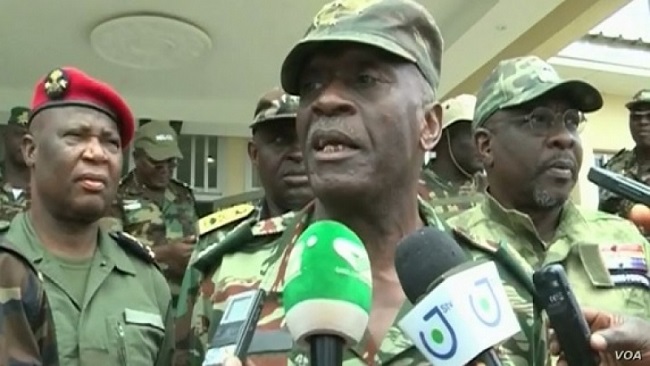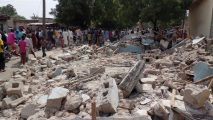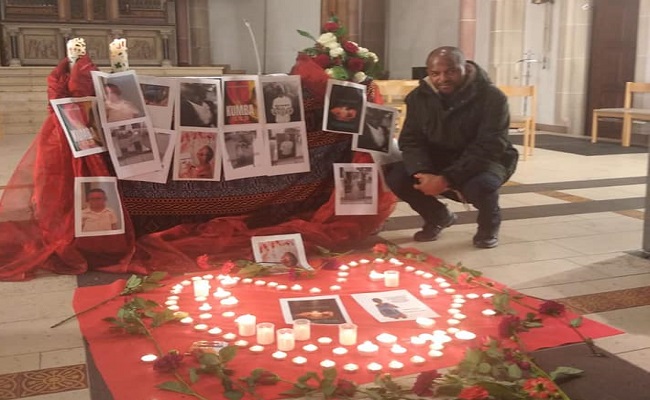Categories
Recent Posts
- Yaoundé: Defense Ministry says “Clear Alliance” between Boko Haram and criminals in recent attack
- Football: MTN Elite One resumes after boycott threats
- Biya’s election season stirs renewed anxiety in Southern Cameroons
- Revealed: Boko Haram fighters kill 20 Cameroonian troops
- Niger: military leader Tiani sworn in as president for five-year transition period
Archives
- March 2025
- February 2025
- January 2025
- December 2024
- November 2024
- October 2024
- September 2024
- August 2024
- July 2024
- June 2024
- May 2024
- April 2024
- March 2024
- February 2024
- January 2024
- December 2023
- November 2023
- October 2023
- September 2023
- August 2023
- July 2023
- June 2023
- May 2023
- April 2023
- March 2023
- February 2023
- January 2023
- December 2022
- November 2022
- October 2022
- September 2022
- August 2022
- July 2022
- June 2022
- May 2022
- April 2022
- March 2022
- February 2022
- January 2022
- December 2021
- November 2021
- October 2021
- September 2021
- August 2021
- July 2021
- June 2021
- May 2021
- April 2021
- March 2021
- February 2021
- January 2021
- December 2020
- November 2020
- October 2020
- September 2020
- August 2020
- July 2020
- June 2020
- May 2020
- April 2020
- March 2020
- February 2020
- January 2020
- December 2019
- November 2019
- October 2019
- September 2019
- August 2019
- July 2019
- June 2019
- May 2019
- April 2019
- March 2019
- February 2019
- January 2019
- December 2018
- November 2018
- October 2018
- September 2018
- August 2018
- July 2018
- June 2018
- May 2018
- April 2018
- March 2018
- February 2018
- January 2018
- December 2017
- November 2017
- October 2017
- September 2017
- August 2017
- July 2017
- June 2017
- May 2017
- April 2017
- March 2017
- February 2017
- January 2017
- December 2016
- November 2016
- October 2016
- September 2016
- August 2016
- July 2016
- June 2016
Featured
Most Commented Posts
 4 Anglophone detainees killed in Yaounde
4 Anglophone detainees killed in Yaounde
18 comments Chantal Biya says she will return to Cameroon if General Ivo Yenwo, Martin Belinga Eboutou and Ferdinand Ngoh Ngoh are sacked
Chantal Biya says she will return to Cameroon if General Ivo Yenwo, Martin Belinga Eboutou and Ferdinand Ngoh Ngoh are sacked
13 comments The Anglophone Problem – When Facts don’t Lie
The Anglophone Problem – When Facts don’t Lie
12 comments Anglophone Nationalism: Barrister Eyambe says “hidden plans are at work”
Anglophone Nationalism: Barrister Eyambe says “hidden plans are at work”
12 comments Largest wave of arrest by BIR in Bamenda
Largest wave of arrest by BIR in Bamenda
10 comments
Latest Tweets
Featured
-

Yaoundé: Defense Ministry says “Clear Alliance” between Boko Haram and criminals in recent attack
-

Football: MTN Elite One resumes after boycott threats
-

Biya’s election season stirs renewed anxiety in Southern Cameroons
-

Revealed: Boko Haram fighters kill 20 Cameroonian troops
-

Niger: military leader Tiani sworn in as president for five-year transition period
-

Over 10 Cameroon gov’t soldiers killed, 20 injured in Boko Haram attack
-

1982-2025: How long will Biya hang on?
© Cameroon Concord News 2025





30, May 2018
UN Emergency Response Plan and Overview of the crisis in Southern Cameroons 0
The crisis in the South-West and North-West Regions of Cameroon has compounded pre-existing vulnerabilities. Since 2016, political and social instability, exacerbated by sporadic violence, has had a negative impact on the civilian population of Cameroon’s South-West and NorthWest Regions, hosting four million inhabitants (16% of the total population). In November 2017, the sociopolitical crisis progressively translated into insecurity and armed violence. Since then, the escalation of tension and upsurge in hostilities between non-state armed groups and defence and security forces have triggered humanitarian needs across the two regions, linked to significant internal displacement.
In recent months, the epicentre of the crisis moved from Bamenda (North-West) to Mamfe and Kumba (SouthWest). All divisions in the South-West region, host to more than 1.4 million inhabitants, are affected by the crisis.
The number of households forced to flee their villages – or the country – in search of safer areas has rapidly and steadily increased since November 2017. Recent needs assessments report that at least 160,000 people have been internally displaced in the two affected regions and would need humanitarian and protection assistance over the next three months. In addition, more than 21,000 Cameroonians have been registered as refugees in Cross River, Benue and Akwa Ibom States in Nigeria.1 This crisis is taking place against a backdrop of several other humanitarian emergencies affecting 3.3 million people across Cameroon.
Most affected areas
The South-West Region has become the hub of the crisis as it is home to more than 90% of the 160,000 internally displaced persons (IDPs) in need of humanitarian assistance; 135,000 are located in Meme Division and 15,000 in Manyu Division. The remaining 10,000 are displaced in the North-West Region.
Simultaneously, dozens of villages in Mbongue and Konye Subdivision (Meme Division) have been emptied of their populations. The situation is similar in the NorthWest, especially in Boyo Division.
Many villages have suffered significant material damage in Mbongue and Konye Subdivision (Meme Division), and in Eyumodjok and Akwaya Subdivision (Manyu Division). 1 This Response Plan does not include the need of Cameroonian refugees who found refuge in Nigeria Recently, insecurity has spread to new divisions in the South-West (Ndian, Lebialem, Fako) and North-West (Boyo).
Who are the most vulnerable?
Clashes between non-state armed groups and defense and security forces have displaced the civilian population into the surrounding forests and villages – 80% of the displaced population have found refuge in the forest.
The two regions has experienced a deterioration of living conditions – primarily affecting school-age children, women and the elderly – and a collapse of livelihoods as well as heightened abuses.
The crisis and subsequent displacement have prevented people from accessing their fields and markets. For most of the affected population who relied upon agriculture or livestock as their main sources of livelihoods before the crisis, dependency on external assistance will be inevitable in the short-term.